MARKET OVERVIEW
The global unmanned systems market of the defense and aerospace industry will continue to be at the center of deciding the nature of automation technology in the world. The market is interested in developing, making, and utilizing vehicles and systems that will run on their own. The systems will be utilized across various domains like air, land, sea, and space and provide autonomous or remotely controlled options for a variety of missions and operations. As more technological advancements are made, this industry will be a platform for innovation in defense, commerce, and civilian applications, the prime imperative being operational efficiency, accuracy, and safety where it is dangerous or impractical for humans to be present.
The global unmanned systems market will expand beyond the boundaries of traditional defense items by combining superior sensors, communication sub-modules, and artificial intelligence to enable tasks by machines to be performed autonomously. Manned and unmanned systems will integrate into expansive digital ecosystems with emerging trends, enabling it to exchange information efficiently, become aware of situations, and respond to missions. Not only will the market meet defense organizations' strategic requirements, but also overflow into commercial markets that are seeking cutting-edge robotics to improve logistics, agriculture, infrastructure surveillance, and environmental surveillance.
Rather than a discrete portion of the enormous technological cosmos, the global unmanned systems market will be a force propelling future strategy through public and private arenas. Governments increasingly will focus on increasing unmanned capabilities for border patrol, disaster response, and intelligence gathering. Companies will also employ these systems in an attempt to reduce the operational cost, enhance safety protocols, and raise the emphasis on real-time data-based decision-making. Unmanned systems are no longer going to be viewed independently as a means of using them in specialty markets but rather become a part of standard operations, altering industry operations as much as service distribution. The size of the global unmanned systems market will no longer be merely for autonomous robot or drone vehicles alone.
It will also include an array of technologies that enable it, including command and control infrastructures, satellite connectivity, cybersecurity frameworks, and machine learning algorithms. These will collectively ensure unmanned operations become reliable, responsive to altering mission parameters, and secure. With nations and companies preparing for increasingly dynamic operational environments, this market will be out in front of technological readiness and resilience. Also, the global unmanned systems market will more and more overlap with legal, ethical, and regulative innovation. While autonomy enhances, questions of accountability, safety, and limits on machine decision-making will become increasingly evident. Regulators will seek to establish standards and frameworks aligned with technological change that guarantee unmanned systems operate under neatly defined parameters that safeguard public interests as much as they enable innovation.
Over time, the global unmanned systems market will demonstrate its ability to reimagine operating models, business models, and worldwide collaborations. With continued dependency on unmanned systems, the market's power will grow far beyond manufacturing, becoming embedded in infrastructure needed to support it, environmental control, and humanitarian missions. Its growth will be a larger shift toward automation-based solutions with a focus on flexibility, precision, and minimizing human exposure to risk from operations throughout the world.
Global unmanned systems market is estimated to reach $45,698.68 Million by 2032; growing at a CAGR of 10.3% from 2025 to 2032.
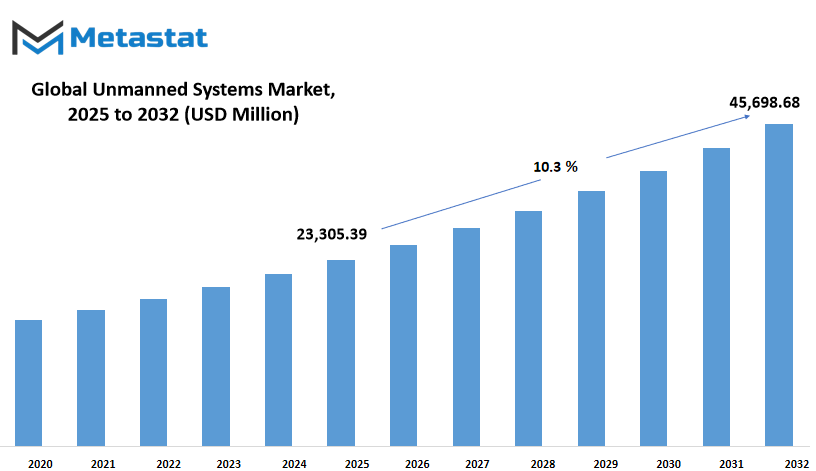
GROWTH FACTORS
The global unmanned systems market looks promising as technology continues to advance and industries begin to recognize the many benefits these systems bring. One of the key growth factors driving the market is the rising demand for automation across various sectors. Companies and governments are turning to these systems to carry out tasks that are either too dangerous, too time-consuming, or simply inefficient for humans to perform. This demand is further supported by the rapid development of artificial intelligence and machine learning, which are helping these systems become smarter and more capable over time. Another factor pushing the growth of Global Unmanned Systems is the increasing need for surveillance and security solutions. Whether it is for border control, disaster response, or infrastructure monitoring, these systems offer cost-effective and reliable alternatives to traditional methods.
However, there are certain challenges that might slow down this growth. One major issue is the high cost associated with the development and maintenance of advanced unmanned systems. Small and medium-sized businesses may find it difficult to invest in these technologies due to budget constraints. In addition to this, there are concerns related to safety, security, and privacy. As these systems collect and transmit data, questions arise about how this information is stored and protected. Regulatory hurdles in different countries may also act as barriers, as governments work to create laws and policies that keep pace with technological advancements.
On a more positive note, there are several opportunities that could support the growth of the global unmanned systems market in the coming years. For example, the expansion of smart cities and the growing use of these systems in agriculture, healthcare, and logistics open up new areas where this technology can prove useful. In agriculture, they can assist with crop monitoring and precision farming, while in healthcare, they have potential for medical supply delivery, especially in remote or hard-to-reach areas. The logistics industry will likely see benefits through faster and more efficient delivery systems that rely on automation.
Looking ahead, the global unmanned systems market will continue to evolve as both technology and society adapt. The focus will likely shift towards making these systems more affordable, secure, and environmentally friendly. As awareness grows and technology becomes more accessible, more industries will find ways to integrate these systems into their daily operations. This combination of innovation and practical application will shape a future where unmanned systems play an even greater role in improving efficiency and safety across the world.
MARKET SEGMENTATION
By Type
The future of the global unmanned systems market will bring about remarkable changes in how people approach security, transportation, exploration, and various industries. These systems are becoming a significant part of future technology, and their importance will only grow in the years ahead. By type, Global Unmanned Systems are divided into four main categories: Unmanned Aerial Vehicles (UAVs), Unmanned Ground Vehicles (UGVs), Unmanned Surface Vehicles (USVs), and Unmanned Underwater Vehicles (UUVs). Each type has its own purpose and will continue to evolve to meet the changing needs of societies across the world.
Unmanned Aerial Vehicles, commonly known as drones, have already gained popularity for their use in surveillance, delivery services, and environmental monitoring. Looking ahead, they will likely play a larger role in emergency response situations such as search and rescue operations, firefighting, and disaster recovery. Their ability to reach areas that are difficult or dangerous for humans will make them a valuable tool. Unmanned Ground Vehicles will also continue to advance, particularly in industries like agriculture, logistics, and defense. These machines will be designed to operate with greater independence, allowing them to complete tasks such as transporting goods or gathering data without the need for direct human control.
Unmanned Surface Vehicles will bring improvements to how we monitor oceans, rivers, and lakes. They will help in mapping waterways, monitoring pollution, and supporting offshore industries like energy production. As technology progresses, these vehicles will become more efficient and capable of operating in harsher conditions for longer periods. Likewise, Unmanned Underwater Vehicles will open up possibilities for deep-sea exploration, underwater construction, and scientific research. These machines will allow experts to study parts of the ocean that are still largely unknown to us, helping to expand our understanding of the planet.
The future of the global unmanned systems market will lead to smarter, more adaptable machines that can work together across air, land, and sea. This connection between different types of unmanned systems will help to create more efficient networks that can gather and share information in real time. The development of these technologies will not only change industries but also improve safety and productivity in countless ways. As these systems become more common and accessible, they will shape the way people interact with their environments and solve problems on a global scale.
By Technology
The future of the global unmanned systems market will shape how industries, governments, and societies function in the years ahead. These systems are growing in popularity because they offer solutions that improve efficiency, reduce human risk, and open new opportunities for progress. They are already being used across many sectors, including defense, agriculture, healthcare, logistics, and construction. Their influence is expected to expand even more as technology continues to improve. The market for Global Unmanned Systems is categorized based on technology, with clear divisions between Semi-Autonomous, Remotely Operated, and Fully Autonomous systems. Each of these plays a different role in how tasks are carried out without direct human control.
Semi-Autonomous systems are likely to remain important for tasks where human judgment is still needed. These systems can carry out actions on their own but will rely on humans for oversight or final decisions. This balance between human input and machine operation provides both safety and flexibility. In the future, these systems will probably be found in more industries, helping with activities like inspections, deliveries, and even in medical fields where precision and safety matter most.
Remotely Operated systems allow users to control them from a distance. These are especially useful in situations where it is unsafe or impossible for humans to be physically present. They are already used in underwater exploration, bomb disposal, and even in monitoring disaster zones. As communication technology advances, these systems will become more reliable and offer real-time responsiveness, allowing operators to carry out complex tasks with greater accuracy. This means people will be able to manage dangerous or delicate tasks from safe environments, reducing risk and increasing productivity.
Fully Autonomous systems are where the most exciting progress is expected. These operate without human input, using sensors, artificial intelligence, and machine learning to make decisions on their own. In the future, such systems might handle urban deliveries, farm management, and even search-and-rescue operations in ways we can hardly imagine today. They offer the promise of not just replacing human labor but improving how tasks are done through faster reactions and the ability to process large amounts of data instantly.
The future of Global Unmanned Systems points toward a world where human effort and technology work side by side. While some may fear machines replacing jobs, it is more likely that these systems will create new roles focused on monitoring, designing, and maintaining the technology. Their development will continue to change how people live and work, offering new opportunities for growth and safety.
By Application
The future of global unmanned systems market looks promising as technology continues to shape how different industries operate. These systems will play a vital role in transforming activities across various fields, making operations safer, faster, and more efficient. As advancements continue, these technologies will not just support human efforts but also reduce risks in dangerous environments. By application, the market is mainly divided into military and law enforcement, commercial, and others, with each segment expected to grow as demand increases.
In the military and law enforcement sector, Global Unmanned Systems will bring about significant changes. These systems will be used more often for surveillance, intelligence gathering, and border security. Their ability to access places that may be too risky for people will make them an important part of future defense strategies. Governments will likely invest in this technology not just for their security benefits but also because these systems can lower costs related to manpower and reduce the chances of human casualties. Law enforcement agencies may also turn to these systems for monitoring public spaces or handling dangerous situations where sending officers might be too risky.
The commercial use of the global unmanned systems market will expand widely in the coming years. Companies across industries such as agriculture, construction, delivery services, and infrastructure management will rely on them to complete tasks faster and with more accuracy. For example, in agriculture, unmanned systems will be used for monitoring crops and spraying fields, which will help increase efficiency and lower costs. In construction and infrastructure, they will assist with inspections and progress tracking, reducing the need for people to enter unsafe areas. Delivery services, too, will make use of these technologies to offer quicker and more reliable solutions, especially in hard-to-reach places.
There is also a growing space for the global unmanned systems market in other sectors, where their potential is only beginning to be understood. Fields like environmental monitoring, disaster response, and scientific research will likely see more of these technologies being introduced. They will help collect data from places that humans cannot easily reach, allowing for faster and more accurate decision-making. As technology improves, these systems will become more affordable and easier to operate, opening doors for wider adoption across different industries.
Overall, the future of the global unmanned systems market looks bright. They will continue to change how work is done, offering solutions that make tasks safer and more efficient. With new applications being explored, the growth of this technology seems certain.
|
Forecast Period |
2025-2032 |
|
Market Size in 2025 |
$23,305.39 million |
|
Market Size by 2032 |
$45,698.68 Million |
|
Growth Rate from 2025 to 2032 |
10.3% |
|
Base Year |
2024 |
|
Regions Covered |
North America, Europe, Asia-Pacific Green, South America, Middle East & Africa |
REGIONAL ANALYSIS
Based on geography, the global unmanned systems market is divided into North America, Europe, Asia-Pacific, South America, and Middle East & Africa. The global unmanned systems market is expected to shape the future of technology and security in ways that are already starting to become clear today. As more countries invest in advancing their capabilities, the industry will likely continue to expand. The market is organized based on regions, each with its own priorities and development pace. North America is divided into the U.S., Canada, and Mexico, with the U.S. often leading through its strong focus on defense and innovation. Canada and Mexico are also contributing by adopting new technologies that align with their national interests. These countries are working toward more advanced solutions that will help both in defense and in areas like agriculture, transportation, and disaster response.
In Europe, the key countries contributing are the UK, Germany, France, and Italy, with the rest of Europe following these leaders. These nations are focused on making use of the global unmanned systems market for security, border control, and commercial applications. Future developments in this region will likely focus on improving efficiency and safety through automation. The adoption of such systems will continue to grow as governments and private sectors recognize the benefits of reduced risk to human life and increased operational effectiveness.
Asia-Pacific includes India, China, Japan, South Korea, and other countries within the region. This area is quickly advancing, with China and Japan often competing to lead in innovation. India and South Korea are also pushing forward with their own developments. These countries will continue to explore how Unmanned Systems can contribute to their economies, focusing not only on defense but also on industries such as healthcare delivery, transportation, and environmental monitoring.
South America features Brazil and Argentina as the main contributors, with the rest of the continent steadily catching up. These nations are gradually adopting unmanned technologies, focusing on security, agriculture, and emergency response. As technology becomes more affordable and accessible, the region is expected to see wider use and integration.
The Middle East and Africa are broken down into GCC Countries, Egypt, South Africa, and others. These areas are also moving forward, with particular interest in border security, infrastructure monitoring, and environmental protection. As technology progresses, these regions are expected to benefit from increased safety and operational effectiveness through automation.
In the future, unmanned systems market will play an even larger role worldwide. As countries continue to explore these technologies, they will become more integrated into everyday life, from defense to daily services, changing the way people live and work.
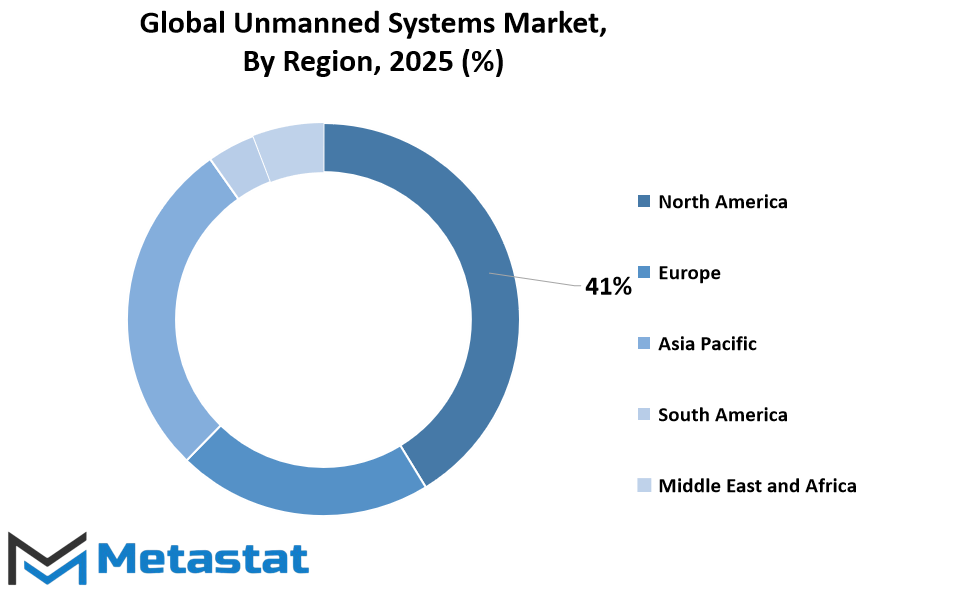
COMPETITIVE PLAYERS
The global unmanned systems market will continue to shape how nations approach defense, security, and even certain aspects of civil operations. With technology advancing at a rapid pace, these systems will not only become more common but also more sophisticated, efficient, and versatile. The competitive players in this industry will play a critical role in determining the direction and success of these advancements. Companies like Northrop Grumman Corporation, Lockheed Martin Corporation, Raytheon Technologies Corporation, Thales Group, Elbit Systems Ltd., General Atomics Aeronautical Systems, Inc., Boeing Defense, Space & Security, Textron Inc., Israel Aerospace Industries (IAI), Leonardo S.p.A., Teledyne Technologies Incorporated, L3Harris Technologies, Inc., FLIR Systems, Inc., and Kratos Defense & Security Solutions have already established themselves as leaders in this space. Their ongoing investments and innovations will influence how unmanned systems evolve globally.
These organizations have already shown strong capabilities in designing systems that are highly reliable, whether for air, land, or sea use. Their experience gives them a competitive edge as they move forward, developing new models that can handle more complex tasks with greater precision. The future will likely see these companies focus on making unmanned systems smarter through artificial intelligence integration, allowing for better decision-making without direct human control. This will make operations faster and safer, especially in areas that are too dangerous for people to enter.
As nations and private sectors realize the potential of global unmanned systems market, competition among these companies will only increase. Each will aim to offer something unique, whether it be enhanced performance, improved safety, or reduced costs. This competition will drive constant innovation, benefiting industries like defense, surveillance, agriculture, and logistics. It is expected that these systems will soon be able to operate in environments previously considered impossible, opening new opportunities for exploration and data collection.
Moreover, partnerships and collaborations between these key players and governments will grow. Such relationships will help shape regulations and standards, ensuring that unmanned systems are used responsibly and safely. Companies will need to balance innovation with ethical considerations, especially as concerns about privacy and security grow.
Looking ahead, the role of these competitive players in the global unmanned systems market will not only shape the market but also how society views and accepts unmanned technologies. Their efforts will help define the next generation of systems, making them an essential part of modern life across multiple sectors.
Unmanned Systems Market Key Segments:
By Type
- Unmanned Aerial Vehicles (UAVs)
- Unmanned Ground Vehicles (UGVs)
- Unmanned Surface Vehicles (USVs)
- Unmanned Underwater Vehicles (UUVs)
By Technology
- Semi-Autonomous
- Remotely Operated
- Fully Autonomous
By Application
- Military and Law Enforcement
- Commercial
- Others
Key Global Unmanned Systems Industry Players
- Northrop Grumman Corporation
- Lockheed Martin Corporation
- Raytheon Technologies Corporation
- Thales Group
- Elbit Systems Ltd.
- General Atomics Aeronautical Systems, Inc.
- Boeing Defense, Space & Security
- Textron Inc.
- Israel Aerospace Industries (IAI)
- Leonardo S.p.A.
- Teledyne Technologies Incorporated
- L3Harris Technologies, Inc.
- FLIR Systems, Inc.
- Kratos Defense & Security Solutions
WHAT REPORT PROVIDES
- Full in-depth analysis of the parent Industry
- Important changes in market and its dynamics
- Segmentation details of the market
- Former, on-going, and projected market analysis in terms of volume and value
- Assessment of niche industry developments
- Market share analysis
- Key strategies of major players
- Emerging segments and regional growth potential



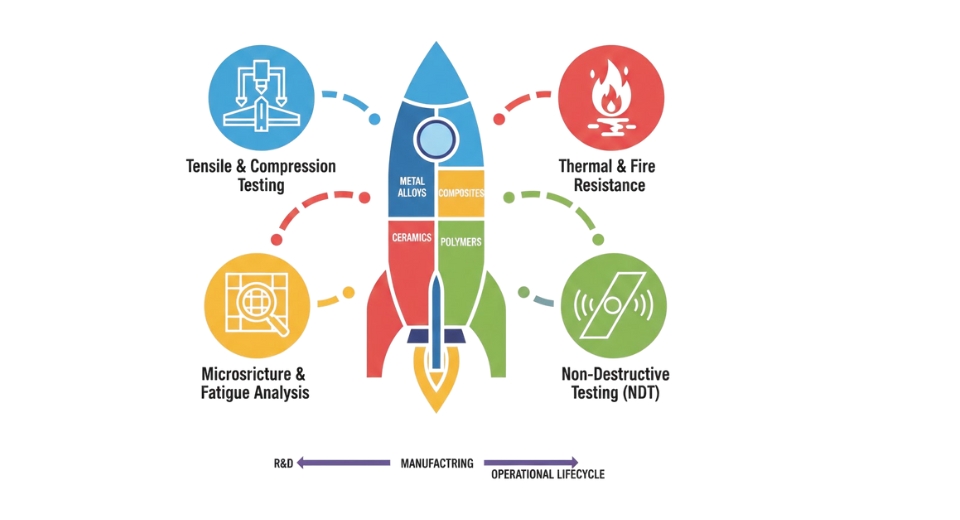
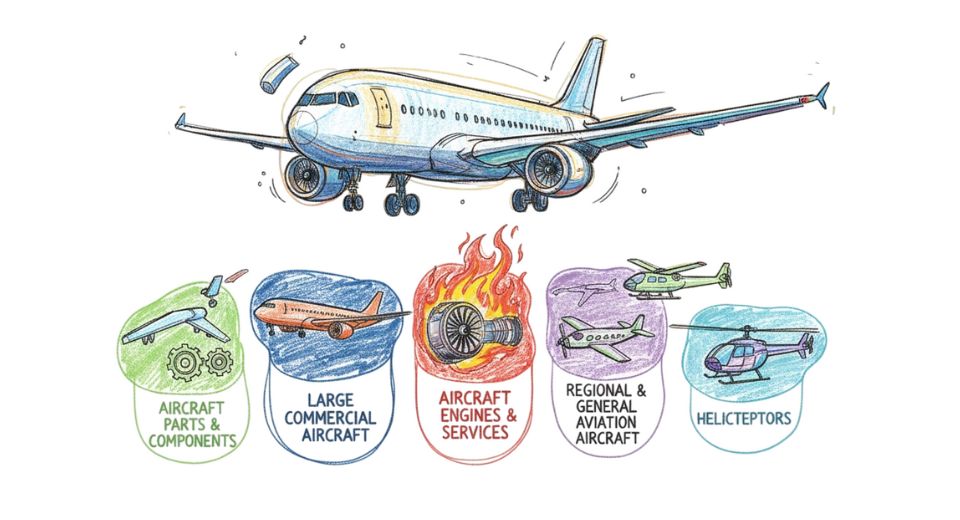
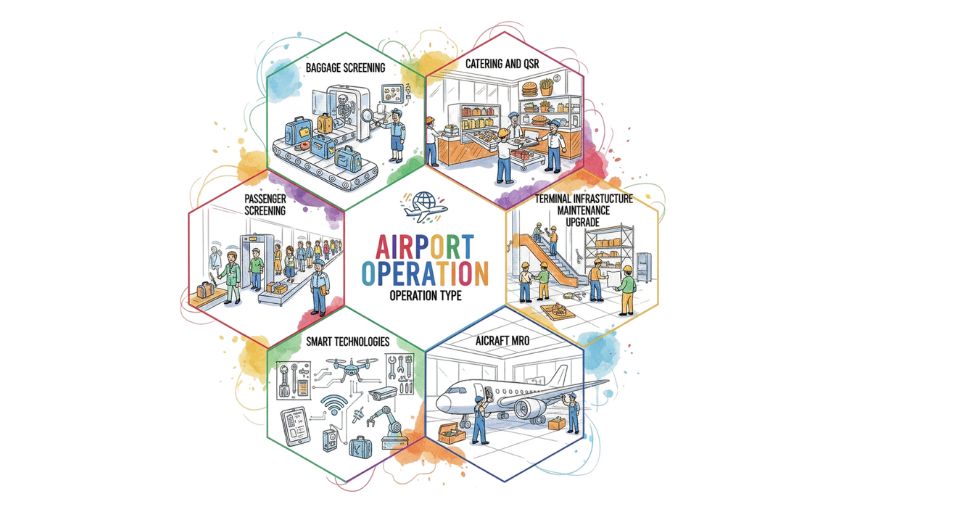


 US: +1 3023308252
US: +1 3023308252






